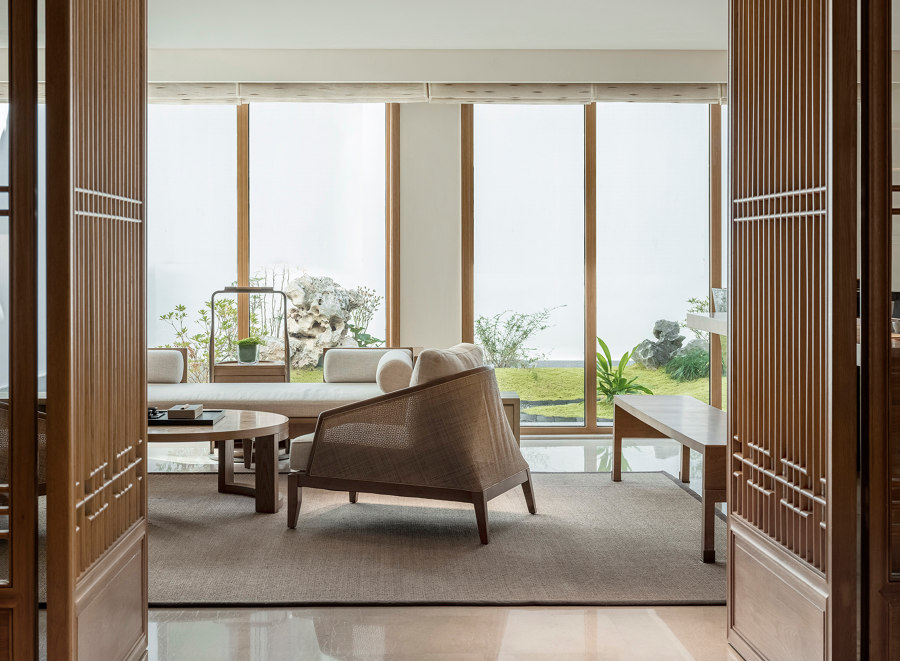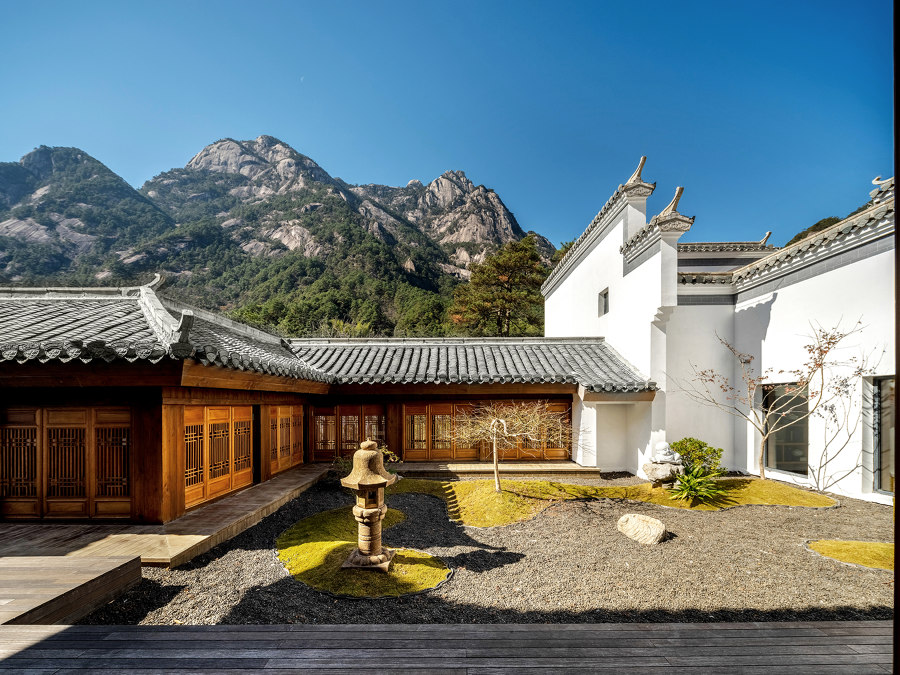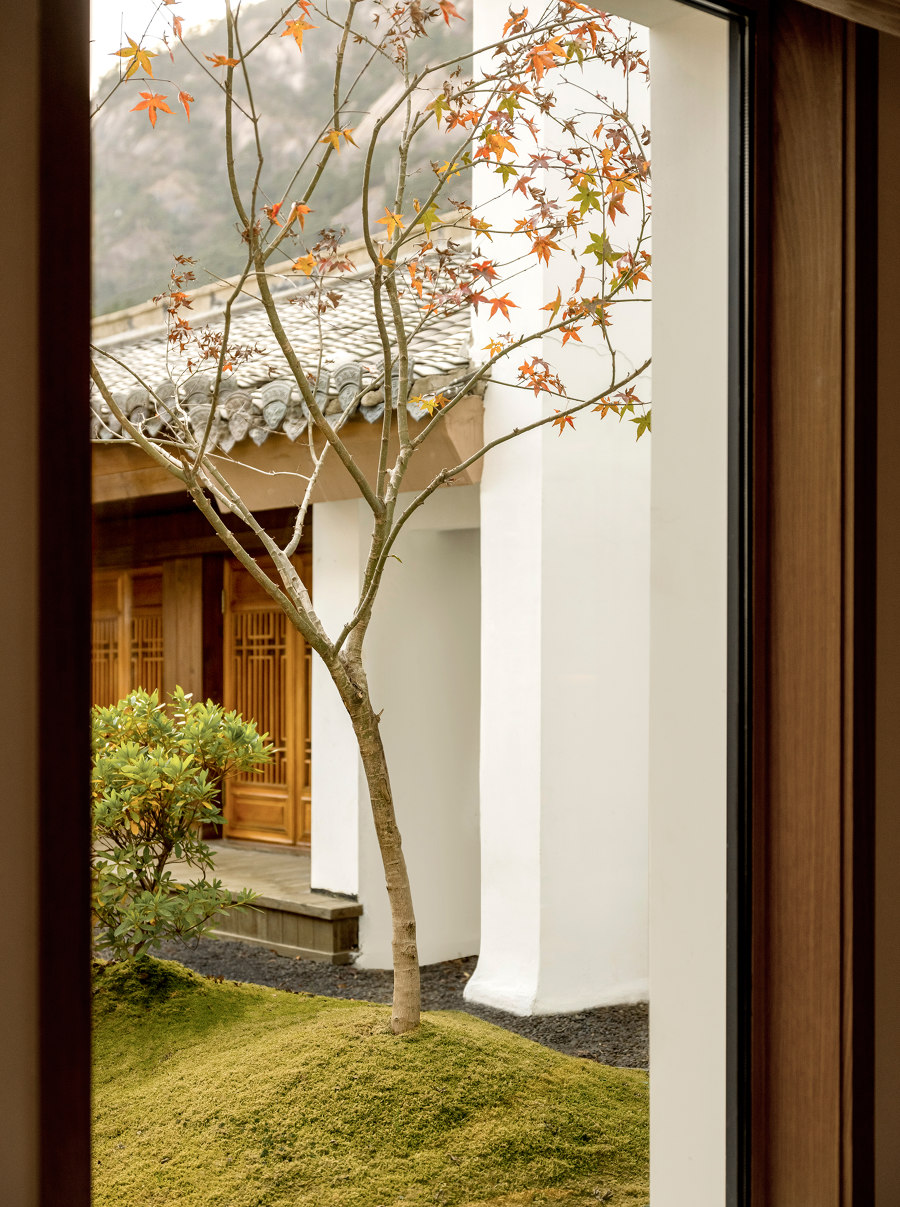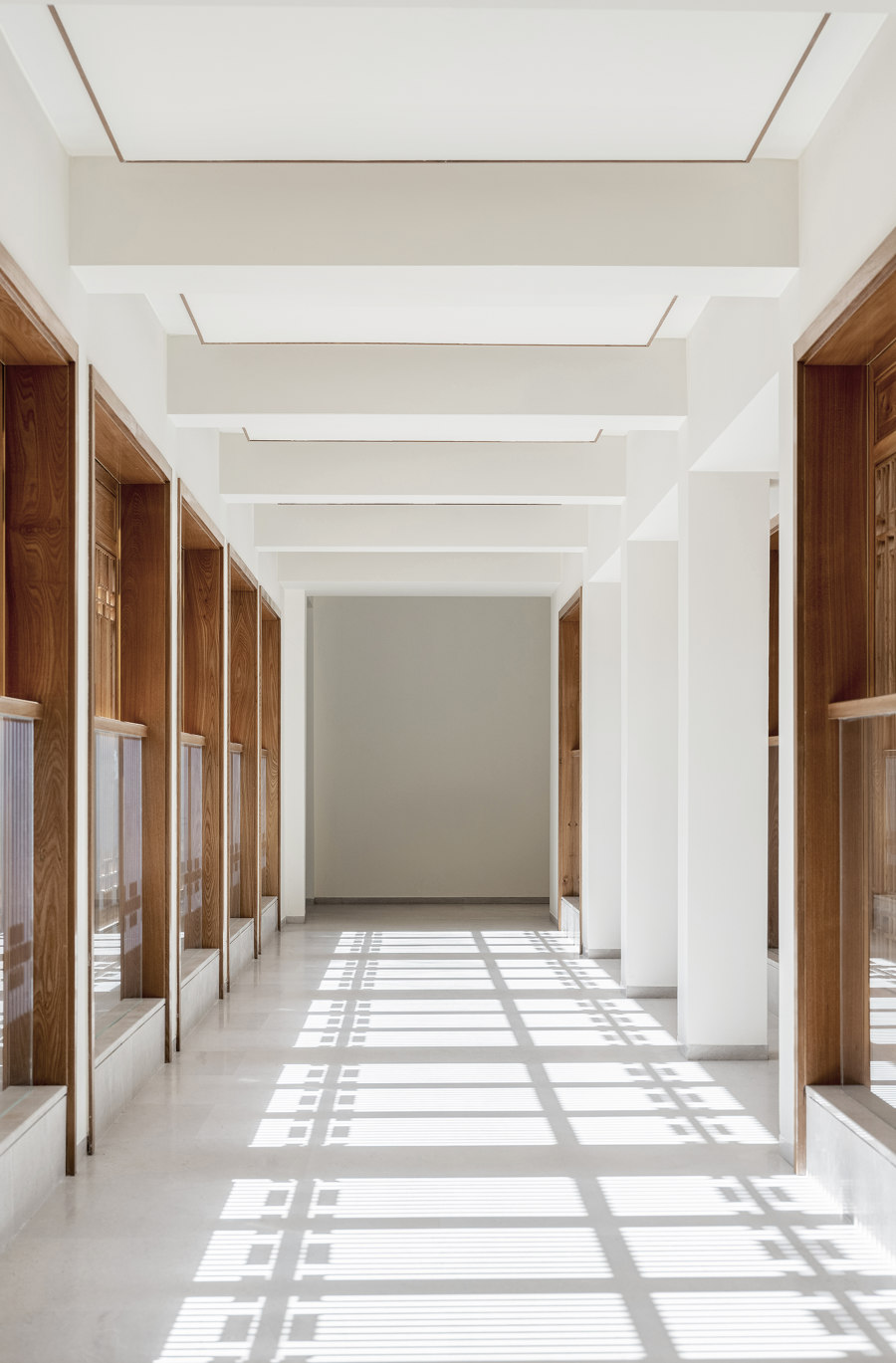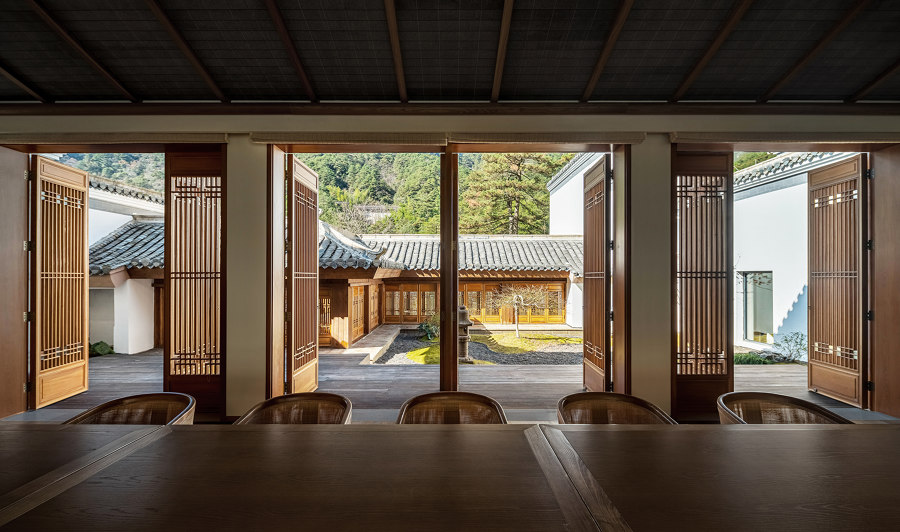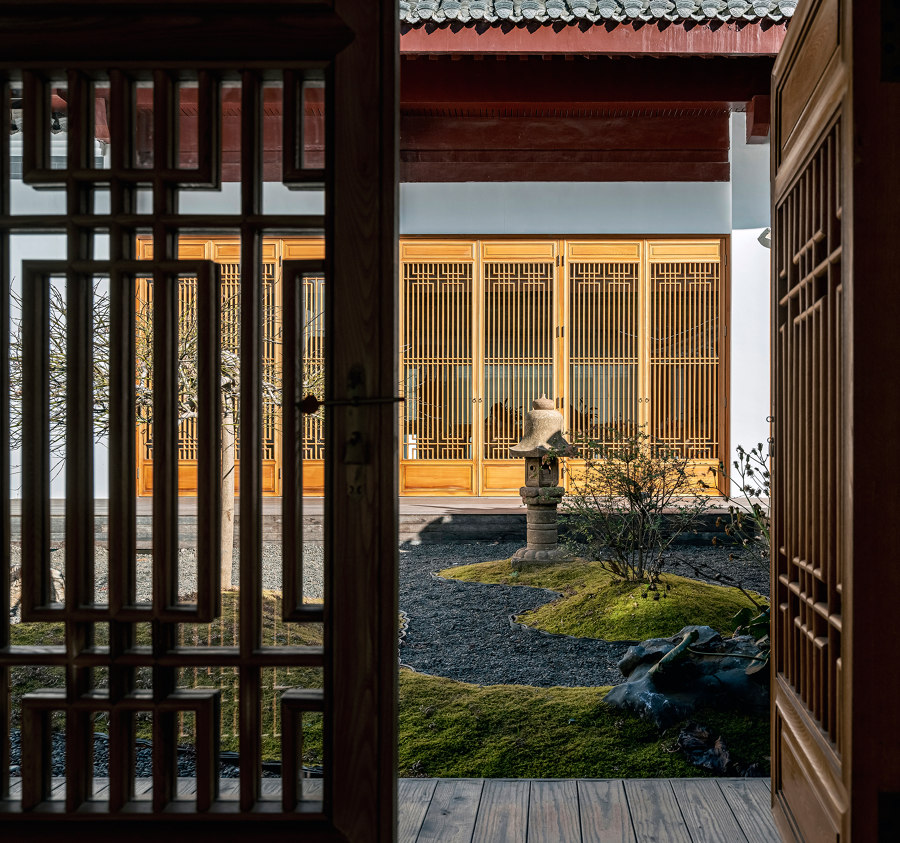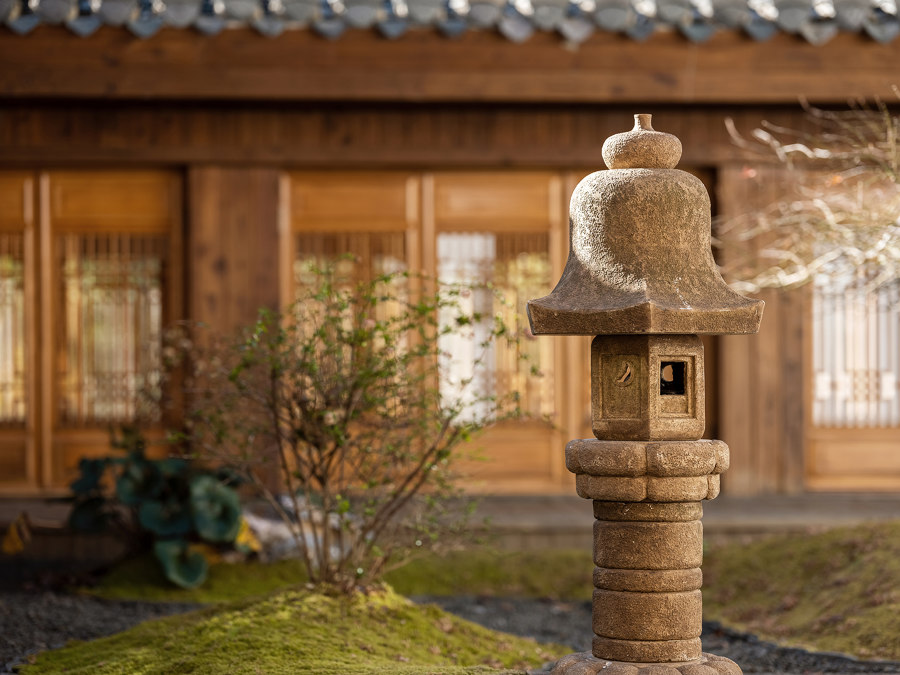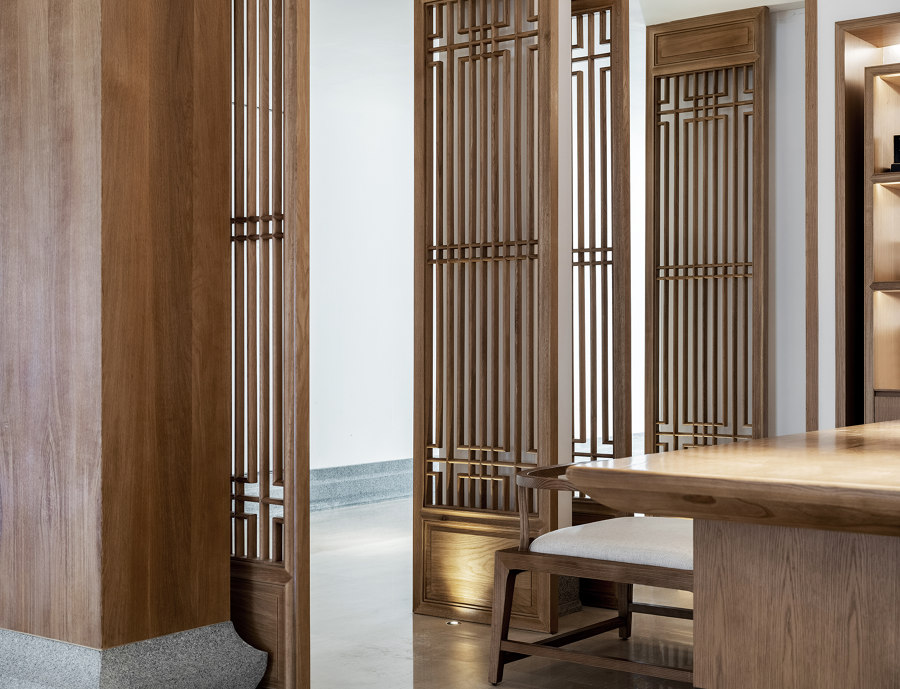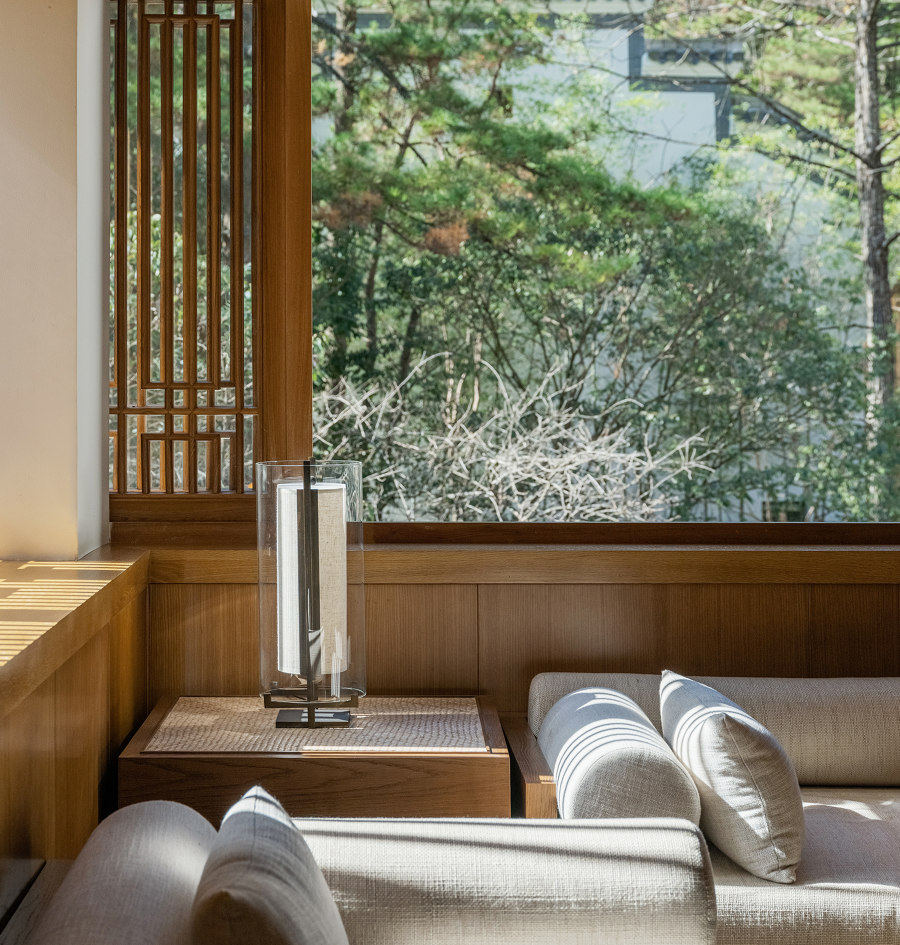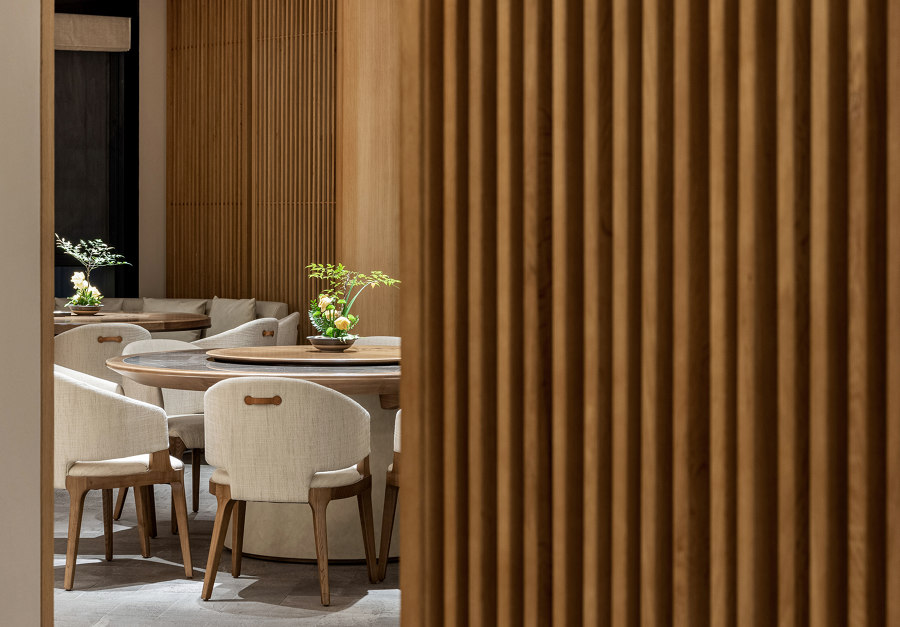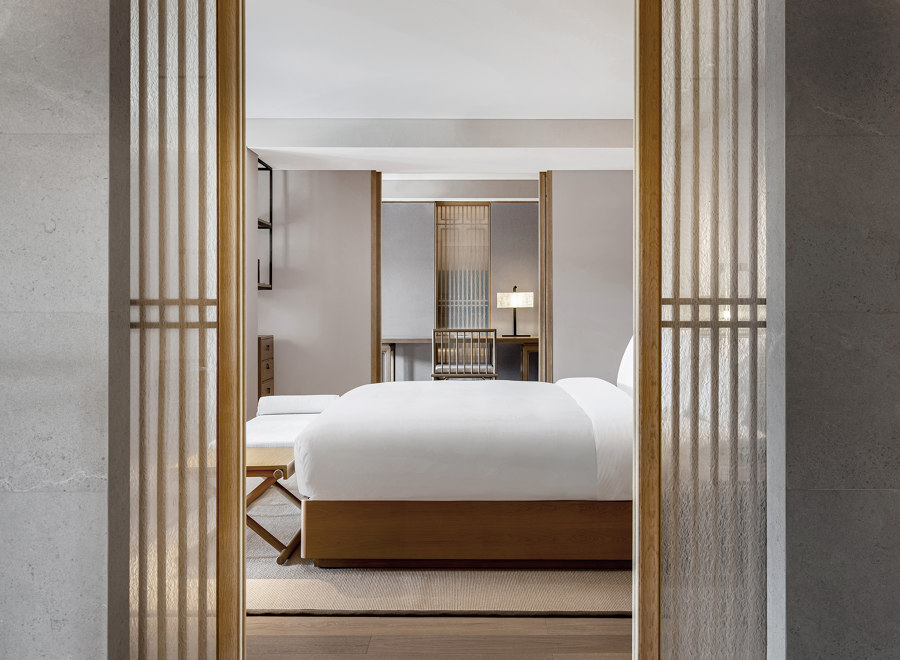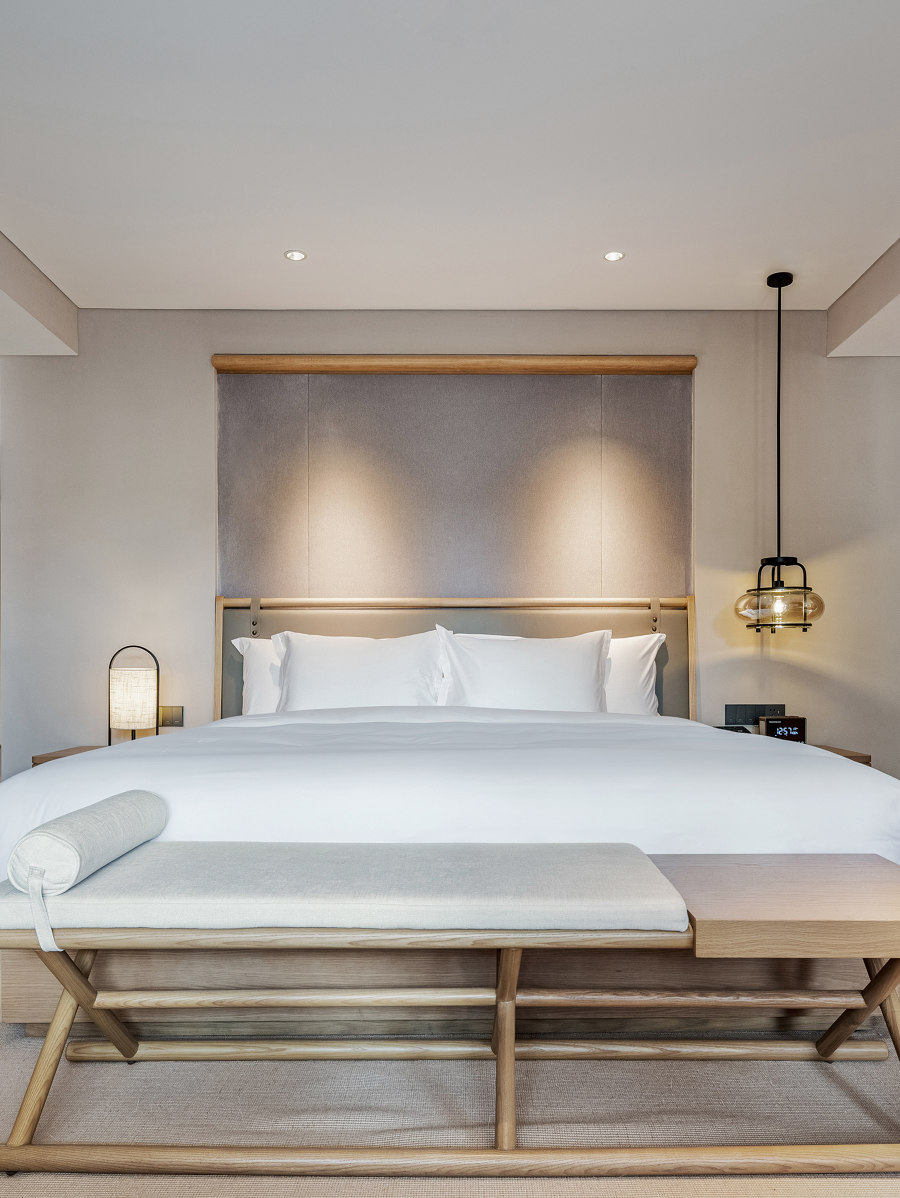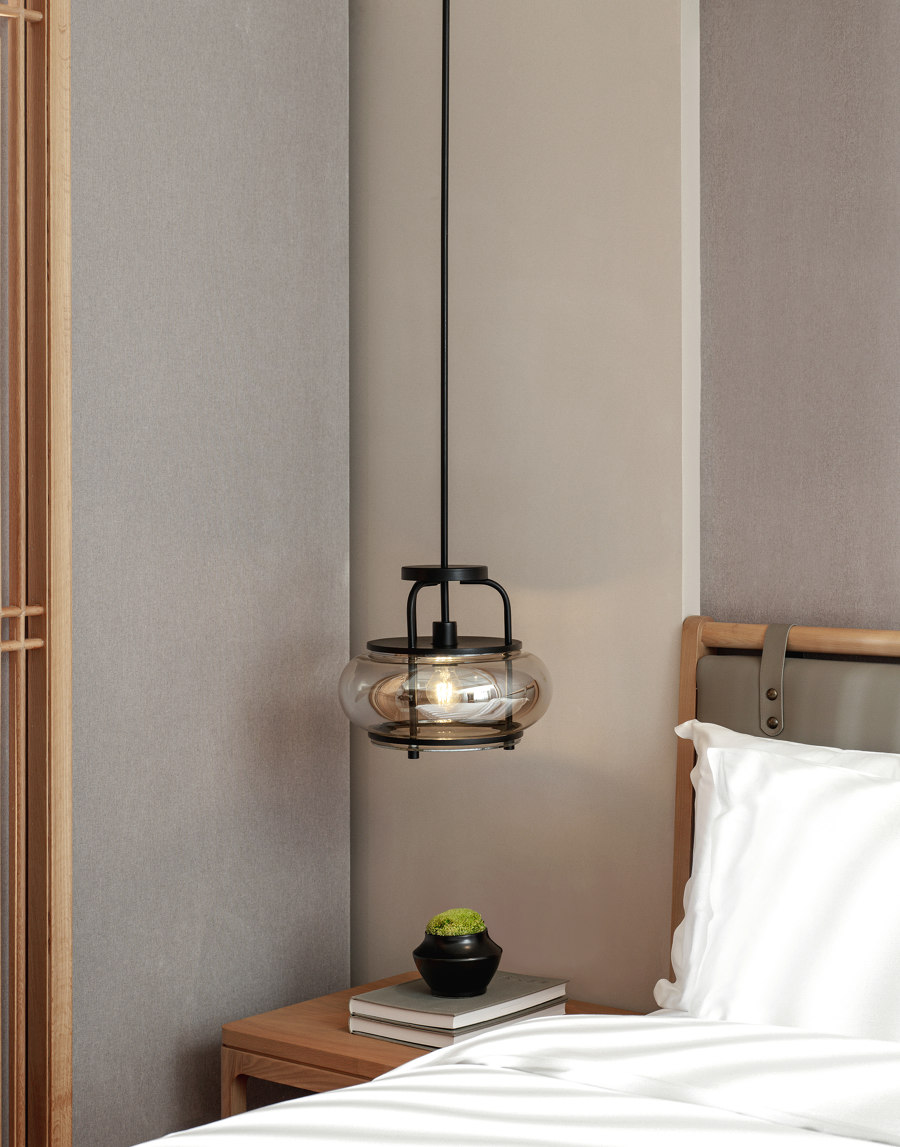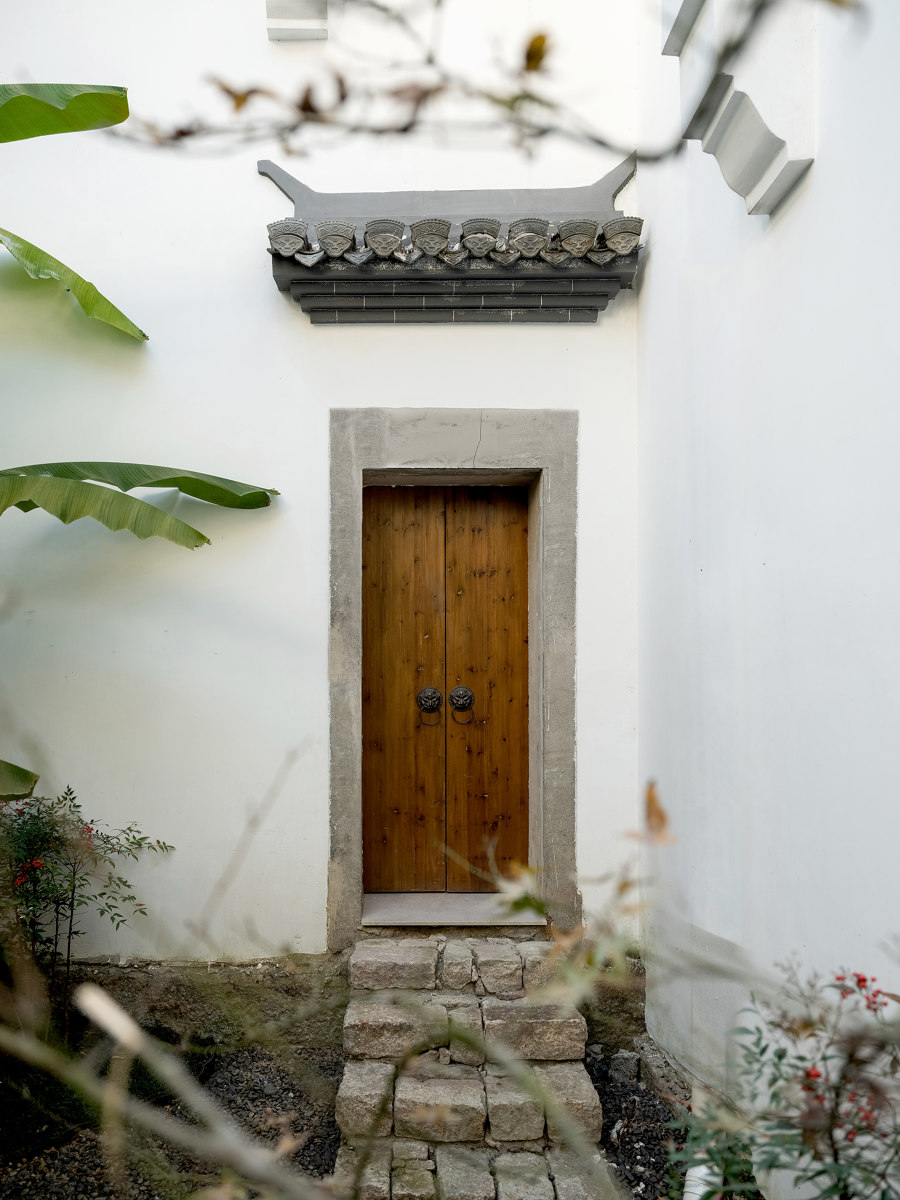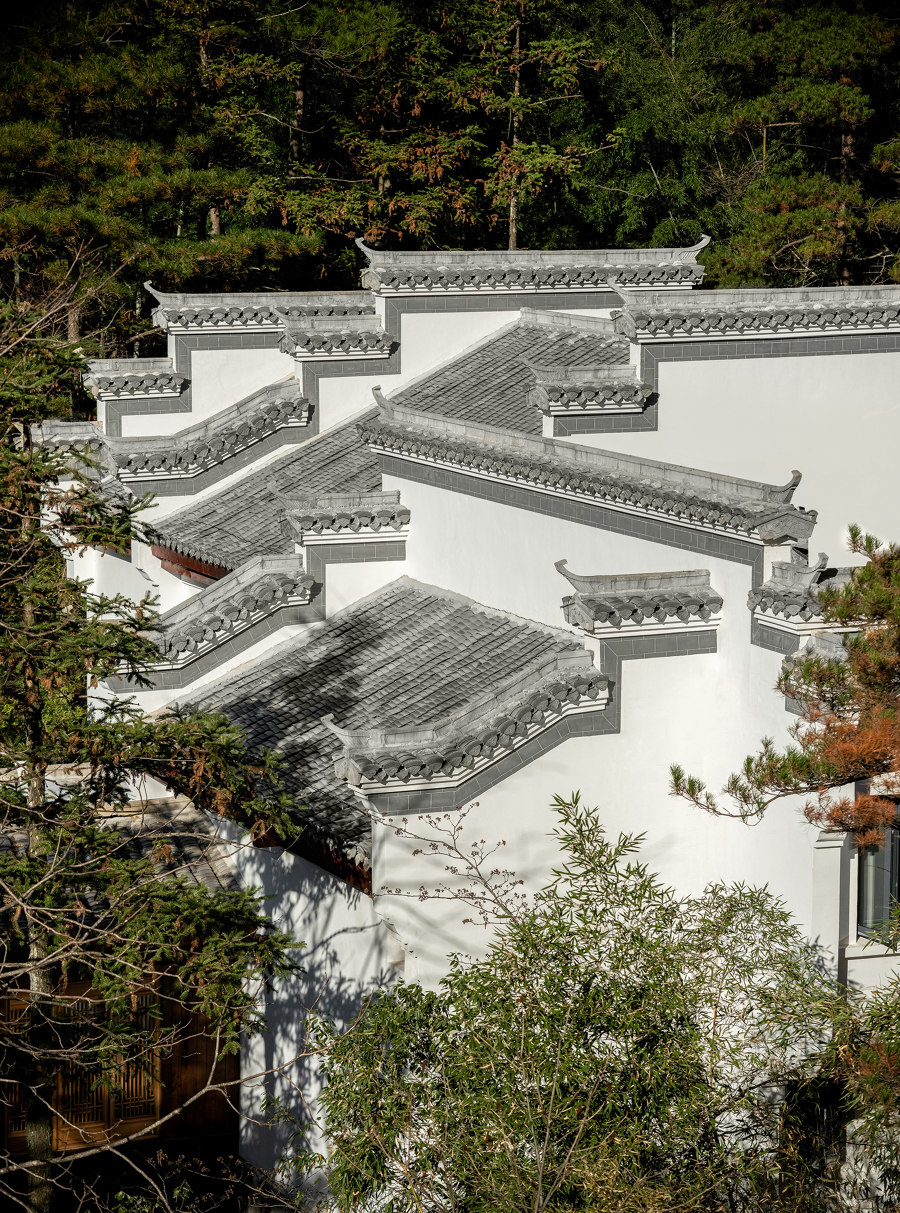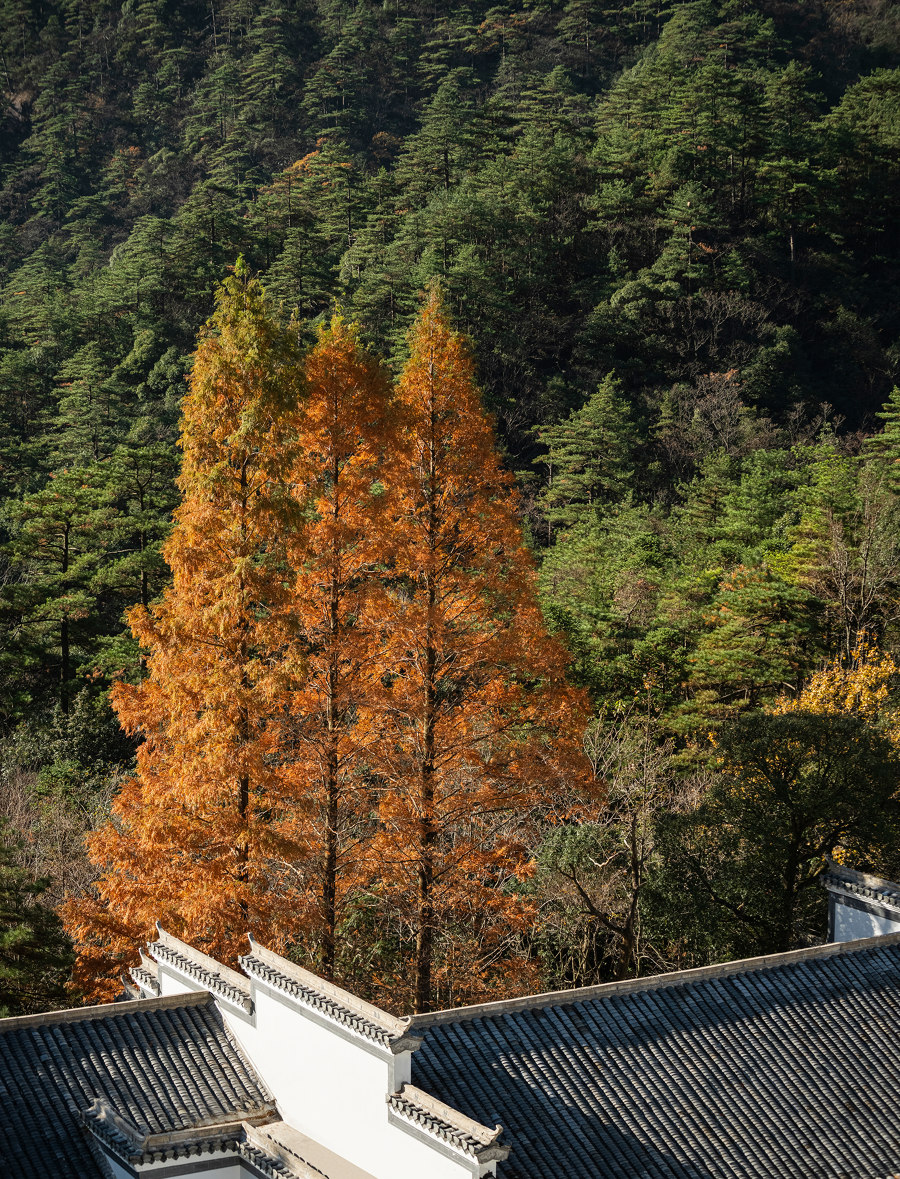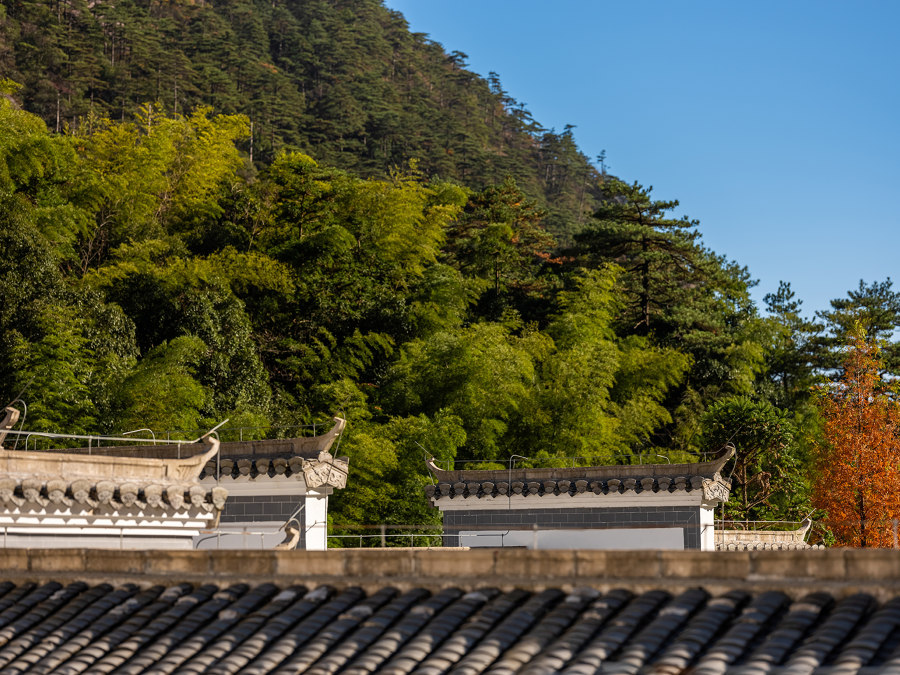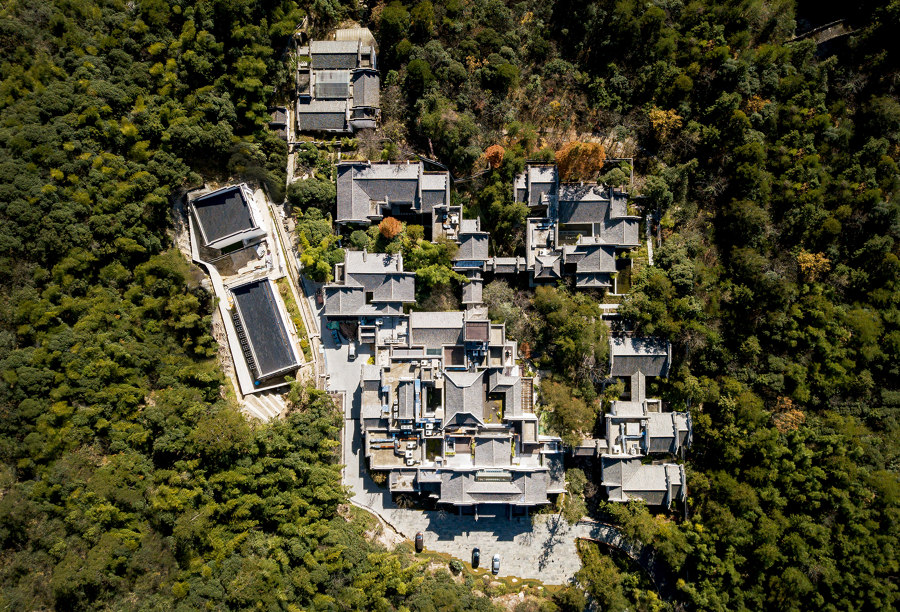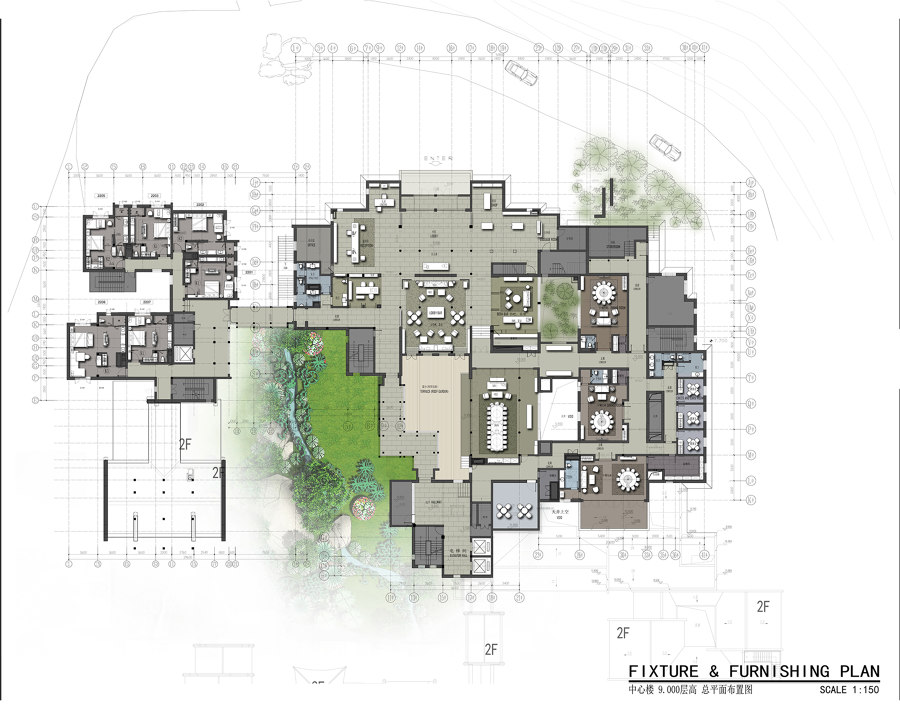The project is hidden in a valley of Huangshan Scenic Area, near the Yungu Temple. Sitting at an altitude of 800 meters, the resort hotel is surrounded by mountains, clouds and mist. It embraces nature, and provides a serene environment.
It was transformed from the formerly Yungu Hotel, which is a complex composed of five Hui-style architectures. Taking on the characteristics of local traditional houses, the complex was designed by Wang Guoyu, one of the Second Generation of Chinese Architects. Nestling under hillsides, the buildings are scattered on the site and form many courtyards. The cluster of architectures perfectly blends into nature, embodies the traditional Chinese philosophy of "unity of man with nature", and has become an iconic cultural landmark in Huangshan Scenic Area.
After being put into use for more than three decades, the complex needed refurbishment. CCD was entrusted to renovate it and give it a brand-new image.
Walking along a little path,
I find a footprint on the moss,
A white cloud low on the quiet lake,
Grasses that sweeten an idle door,
A pine grown greener with the rain,
A brook that comes from a mountain source,
And, mingling with Truth among the flowers,
I have forgotten what to say.
— by ancient poet Liu Changqing
In ancient times, Chinese literati chose to live a secluded life in mountains, while occasionally gathering with friends to enjoy wine and write poems. Such an elegant lifestyle may well represent the ideal of Oriental living. Even today, a great many modern people yearn for a peaceful and carefree living state.
The renovation work was carried out on the premise of completely preserving the original architectures. It took advantage of the favorable natural resources of Mt. Huangshan (also known as Yellow Mountain), absorbed local culture, health maintenance ideas and classical Chinese culture, and inherited Hui-style architectural style and fabric. In a natural and affordable luxury manner, CCD gave the former old hotel an elegant new image, and reproduced a desired mountain-based living environment.
The design team preserved characteristic architectural elements such as corbiesteps, gray roofing tiles, open-air atriums and verandas to the greatest extent, and employed modern design approaches to retain the unique historical ambience generated by neat and staggered wall lines, gray tiles, white walls, as well as elegant hues.
Buildings, interior spaces and gardens penetrate and complement each other. Natural views, picturesque scenes and spatial atmosphere enable the guests feel calm and carefree. Open-air atriums, corridors and courtyards links up the surrounding guest rooms, making guests feel like they're in an ancient local village. Each guest room enjoys a good view to the yards and mountains, with windows framing the changing and fascinating outdoor landscape throughout the year. Featuring exquisite details, a tranquil ambience and artistic design languages, the small-scale gardens offer varying visual experiences at every step.
Guest room design draws inspiration from the vibrant green scenery of Huangshan in early spring. The transparent space blends with vigorous landscape, which refreshes the mind. Subtle adjustments were made to better meet the living demands of modern people. Furniture and furnishings are characterized by neat and modern lines, which harmoniously merge with the classic elegant atmosphere.
Modernity and coziness are incorporated into old architectural spaces, generating the dialogue between the new and old, present and past, as well as space and time.
Design Team:
CCD / Cheng Chung Design


